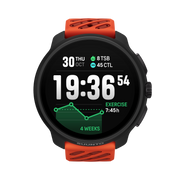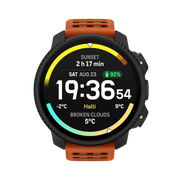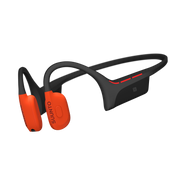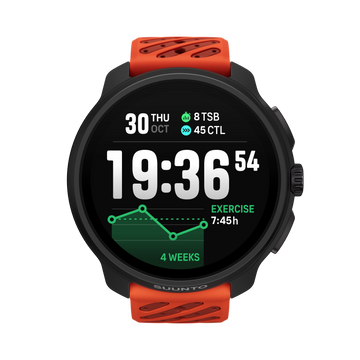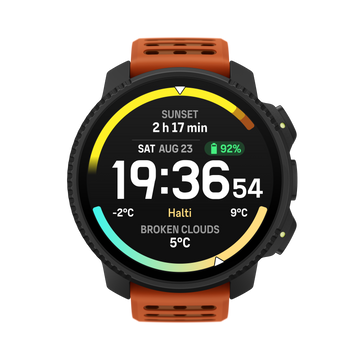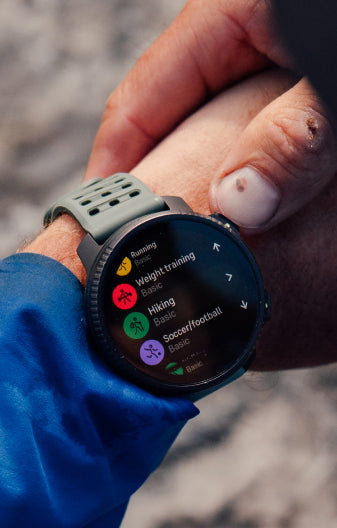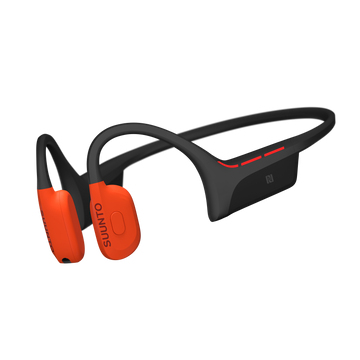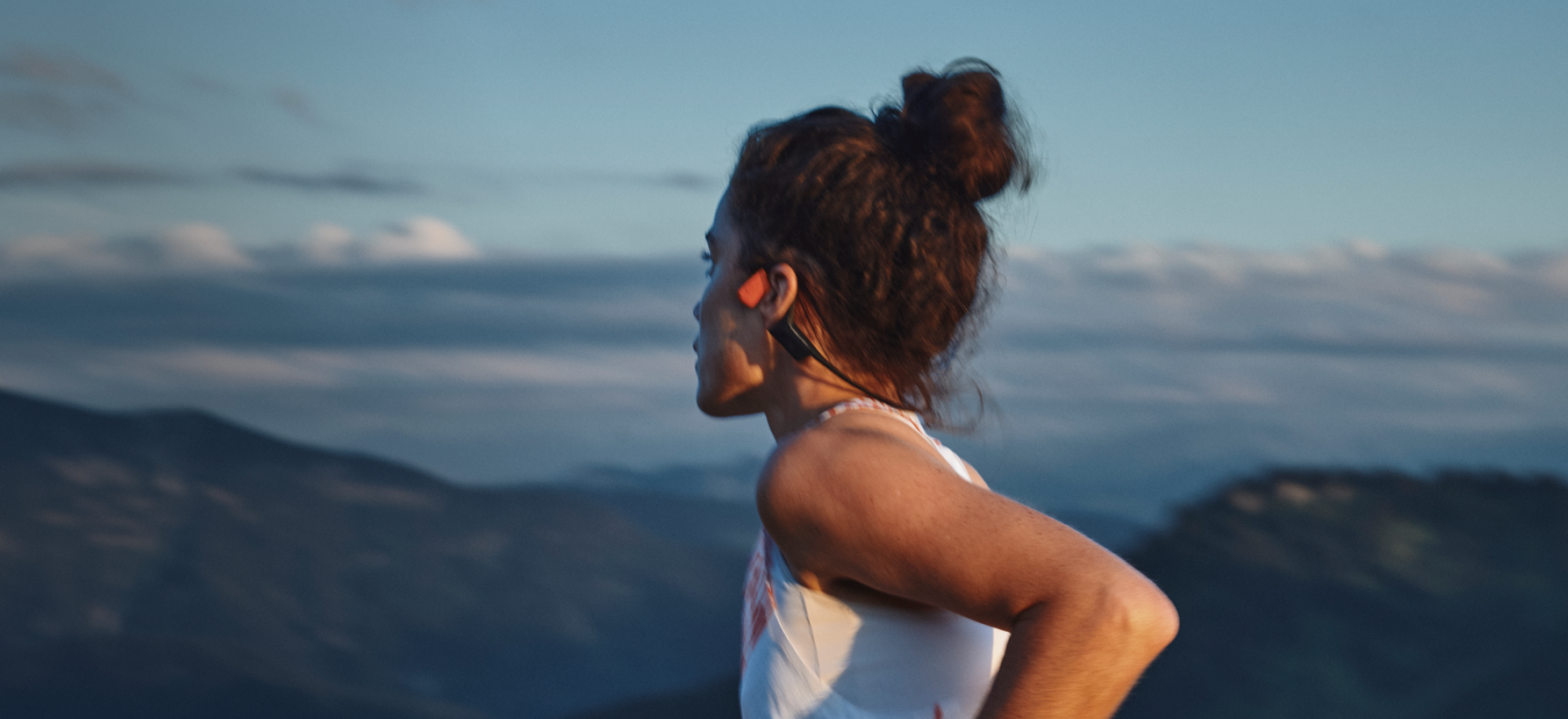

Suunto Blog

6 keys to planning your training year
The Austrian management guru Peter F. Drucker said it well: “Unless commitment is made, there are only promises and hopes; but no plans.”
Put another way, without a clear plan, there’s no real commitment. It’s the same with training. We need a goal and a plan to reach it. Otherwise, the risk is we keep on doing the same old thing. If we do aim to improve our performance, we must know where we’re going and how to get there.
“A training plan doesn’t have to start directly at the beginning of a year, but it’s a good time for making plans and setting new goals,” says Austrian sport scientist, coach and athlete Susi Kraft.
Susi is one half of the Berghasen, an awesome German-language blog covering everything you need to know about ski touring: training tips, tours, gear and so on. We caught up with the passionate mountain lover and asked what goes into a good training plan. Read on for Susi’s six tips.
Susi works and plays in the stunning mountains around Salzburg. © Berghasen
Take the long view
You might be wondering whether you really need to have a plan for the whole year. The answer is yes if you want to have an optimal training year and achieve your goals. Susi explains why:
“When designing a training plan you normally define one or two personal highlights in the training year,” she says. “At those events your physical performance should be at the highest level.”
Once the highlights are decided you then distribute every single workout/training session across your calendar. Sport scientists like Susi call this process training periodization, which has three phases:
1. Base period2. Pre-competition period3. Competition period
“A smart training periodization is only possible if you have an overview of the whole year and the athlete highlights factored in,” Susi says. “Besides that you also have to factor in your personal life, like family, holidays, work, weddings, kids and so on.”
Select your highlights
Without a goal, it’s easy to lose direction. When thinking about your next goal, use the acronym as a guide, SMART: specific, measurable, achievable, realistic and timely.
Specific: Well defined, clear, and unambiguousMeasurable: With specific criteria that measure your progress toward the accomplishment of the goalAchievable: Attainable and not impossible to achieveRealistic: Within reach, realistic, and relevant to your life purposeTimely: With a clearly defined timeline, including a starting date and a target date. The purpose is to create urgency.
“The training plan itself should always be orientated around a goal you want to achieve,” Susi says. “That goal could be a trail running competition, finishing your first triathlon, climbing Mont Blanc or losing weight. Setting new goals and working with a specific training plan keeps motivation high. That’s what I see when working with my athletes.”
Consider this
“The no pain, no gain approach to training is really outdated, “ Susi says. “30 years ago experts in sports science didn’t always know how to train right. What we know now is that the best endurance athletes don’t train so hard – most of their training is at low intensity.”
Take a moment to think about that before creating a plan to achieve your goal. This is especially important if you have a tendency to push yourself hard. A gentler approach may serve you better.
“A lot of people I see try to get better really fast,” Susi says. “They train really hard, really long distances. You may get better quickly, but in the long term that’s really bad for the body and for the training programme. Some people actually get worse, become overtrained or are prone to injuries.”
Don’t copy and paste
Oh, the internet. We can find countless training plans and make them our own. Thing is, cutting corners like that might not give you the results you wish for.
“If you just copy last year’s or someone else’s training plan it won’t account for possible improvements in your training status,” Susi says. “Your plan should always be built on your current endurance, strength and other skills. That’s why it is so important to do performance diagnostics regularly and before you start working with a new training plan or coach.”
Avoid these classic mistakes
Susi says people tend to fall into two camps. Those that go overboard and do too much high intensity training too soon, and those that like routine and do the same workouts every week.
“Really think about intensity distribution in your plan,” Susi says. “The risk is, that you do the same stuff every week. That mistake may lead to slower progress, monotony or even overtraining because you didn’t consider rest day and rest weeks. Most people tend to train too hard over several weeks or months. Over a whole year this may lead to chronic exhaustion.”
Don’t be that guy.
Follow this planning flow
Set goals / highlights
Analyze your current physical status – endurance, strength, stability, speed, balance – by doing physical performance tests. The outcome is influenced by your training history. Also consider how much experience a person has and determine your training age, meaning how many years of endurance training, strength training you’ve done and how many years of specific training in the sport you want to compete in.
How often and what exactly is your training programme (hours, km, what kind of sports etc.)
Which weaknesses do you have? What are the main factors we need to approve?
How much time do you have to achieve your goal?
Determine the training periodization over the time window you have available.
Carefully and realistically distribute the training intensity across the calendar
Plan single blocks or training sessions
Lead images: © Berghasen

Share your passion with Suunto app
KEEP UP WITH THE SUUNTO COMMUNITY
The app has many ways in which it keeps you and our community engaged, helps you connect with people with similar interests and allows you to create everlasting training memories and to share relevant content with your friends or on social media.
But, first things first:
We value your privacy
It's always up to you to decide how much you want to share. By default, after you have created your account in the app, your activities are private. Nevertheless, you can change that to any of the other two privacy options: show your activities to your followers or make them public for all the Suunto app users. Additionally, you can change that setting for every exercise individually.
In the app's privacy settings, you can also define if you want to approve people before they can start following you. Read more about adjusting privacy settings with iOS and Android.
Then:
Create long-lasting training memories
Edit your activities to make them memorable: write stories, add comments and comment on your friends' training, add photos and even videos taken during your activity. It matters even if you have a private account. This way, you create a visual diary for your activities and experiences.
Share a data overlay image of your training
After adding photos to your activities, you can share (or save) them with data overlays. You can add elements like altitude graph, total distance, the highest point and many more. You can also add a custom title text on top of the image. Share them with your friends, your social media, or save them for later in your files. Tap the "Share" button on your activity. Tap the information you have displayed to change it. Change the photo by choosing another one from your gallery.
You can even share your training week, month, or year
Want to show your friends your training days, duration per sports, distance, ascent and the active kcal? We have the best way for you to do that. On the app's main screen, tap the calendar or sports/h square and then choose what you want to share. You can send it directly to your friends, post it on your social media channels or save the image for later.
Connect with your friends even if they aren't using our app (yet)
You can sync your Suunto app account with our partner services, like Strava, Training Peaks, Relive and Fatmap, and reach your friends there, too. To connect your Suunto app with other services. Enable the automatic sync from under your Profile. Select the Partner services option and find the apps you want to connect your Suunto app to.
Happy training!

This freerider is going after 30 remote Arctic lines, each one on foot
Suunto athlete and pro Finnish snowboarder Antti Autti is on a new freeriding mission: to ride 30 lines above the Arctic Circle in the northern Scandinavian wilds. Antti’s crew are filming the 30 adventures, which will feature as a web series on Suunto.com here.
Each approach will be done on foot to minimize fossil fuel use, something Antti and many adventure athletes – including Suunto’s Greg Hill and Kilian Jornet – are becoming increasingly conscious of.
Watch the first three episodes of Arctic Lines here!
Antti Autti lives in Rovaniemi, the capital of the Finnish Lapland.
The Arctic Lines project is different from Antti’s previous adventures. “I’ve done a lot of films that are a little bit based on illusion, you know, creating great powder, stories about perfect days in the mountains,” Antti says. “That’s part of my job and the lifestyle I live, but to me it started to feel like there’s much more stuff I can do to inspire people. So I decided to do raw documentary style films that really showcase the things and responsibilities that we have to take care of out in the mountains. This is the idea behind Arctic Lines.”
To get a raw, unsanitized picture of what goes into these kinds of adventures Antti recommends to follow each of the 30 episodes. “You won’t see everything in the few episodes,” he says. “But if you keep following along, you will get more into it and understand what we’re trying to do, which is important.”
The 30 lines are located in northern Finland, Sweden and Norway, and not easy to get to. Approaches from the road end range from eight to 20 km through harsh Arctic conditions, and during winter through the long Polar Night. “The weather is going to be the most tough for us,” Antti says. “In social media and the media generally you will see all these great photos of the Arctic, with amazing sunrises on the horizon in a white landscape and trees filled with snow. But the reality is that we’re up against hard wind, it’s really freaking cold, and it’s more of a mountain and wilderness activity rather than just riding.”
Antti is more used to these conditions than many. He was born and raised in Rovaniemi, the capital of Lapland, and his family home neighbouring Ounasvaara ski resort. As a kid he tried team sports, but didn’t fit in. Out skiing one day when he was nine, he watched in awe as a snowboarder did tricks. When he tried himself a year later, he was hooked.
Read more about Antti Autti here!
Since then Antti has travelled the world – Japan, New Zealand, Europe and elsewhere – competing at snowboarding events and chasing pow on freeriding missions. While he loves to travel and find new lines, his approach to the sport has changed as his awareness around climate change and his real responsibilities as an ambassador for the sport has matured.
“I started to feel that as a professional athlete I have a responsibility to tell what goes into riding some scary line or even riding a nice looking decline that many people could do, but in a way that's safe and responsible,” he says. “So this is a responsibility as an athlete that I’m caring about. I don’t want to do crazy things anymore without actually fulfilling that responsibility and explaining to people why and how I do things like avalanche awareness and being secure in the mountains.”
Watch the Arctic Lines online series here!
All images: © Jaakko Posti Photography
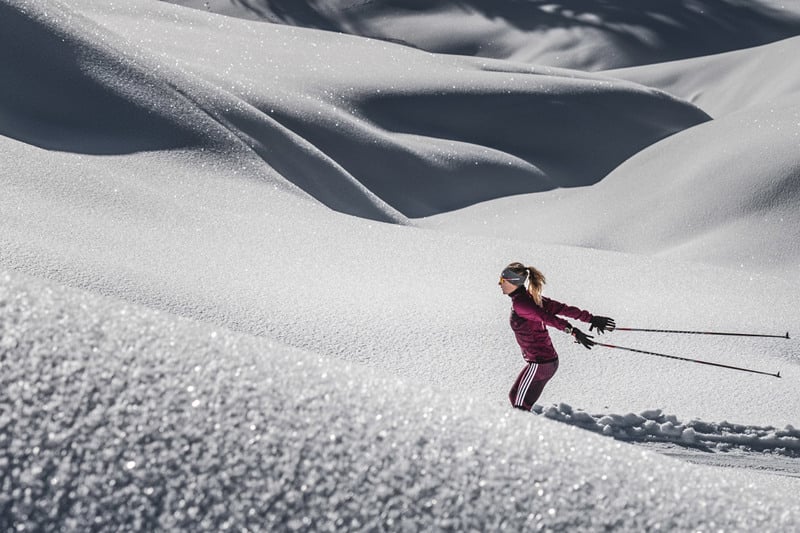
6 tips for XC skiing with your Suunto
If you’re enjoying a white winter and out skiing a lot, there’s some simple things you can do with your Suunto watch and Suunto app to find nice tracks to explore and train more effectively. Read on for our six tips!
Find the cross-country ski tracks
Ok, first step: where to ski? You might know where your local tracks are but how about exploring somewhere further? Based on millions of workouts, Suunto Heatmaps in Suunto app show where the Suunto community loves to train across the planet. Simply select the cross-country skiing heatmap and see where the glow is. On Suunto app go to the map view on Suunto app and select ‘cross-country skiing’ in the heatmap options.
Wear your watch on top of your sleeve
While wrist heart rate is super handy during the warmer seasons you may want to take a different approach during the colder months: wear a Suunto Smart Heart Rate Belt for precise heart rate readings and wear your watch on top of your sleeve for more comfort in the cold. A heart rate belt is useful also when tracking swimming, swinging a kettlebell or if you want to use a Suunto Bike Mount and still get your HR data.
Get automatic lap times
Have you tried any of the SuuntoPlus features yet? They offer some great additional benefits for Suunto 9 and Suunto 5 users. SuuntoPlus Loop is a must for cross-country skiers: it automatically takes lap times for you!
Simply select the Loop feature in the options before starting your exercise. Your watch will record the starting point and when you pass this point later during your exercise, you have done a loop. You can also start a loop manually by pressing the lower right button at any stage, making this spot the start point of the loop. Learn more about SuuntoPlus Loop for Suunto 9 here and for Suunto 5 here.
Turn on the backlight
Mid-winter skiing sessions – at least up here in Finland – often mean skiing at night. To make it easier to check your exercise data, it’s useful to turn the backlight of your watch on. To do this, select ‘cross-country skiing’, go down to ‘options’ and turn the backlight toggle on before starting the exercise.
Where’s the next feedzone?
A route is not always needed for a cross-country ski tour but creating one could still be useful: you can add waypoints along the route and – as you go – see the distance to the next one. This comes in handy on long ski tours or during long-distance races: you can, for example, mark feedzones and know exactly when they are approaching.
Click to learn how to create routes and waypoints using Suunto app.
See the data you want
Your Suunto watch has over 80 sport modes out of the box, but you still can customize it and create more. Custom sport modes are created in Suunto app. Select the display option based on the amount of data you want to have on a single screen and then populate the data fields with anything from the obvious, like heart rate and distance, to more detailed ones, like sunset time or the remaining distance to the next waypoint. Click to learn how to create custom sport modes using Suunto app
Action images by @terrgraphy, skiing by @cajaschoepf

William Trubridge reaches for another world record in freediving
William takes the 126m depth tag on his world record attempt dive. © Johnathan Sunnex
COVID-19 kept Suunto ambassador William Trubridge isolated on Long Island in the Bahamas since March 2020 allowing him to focus exclusively on training with few distractions. After several months he started to see the benefits and his performances in many areas were the best of his career so far.
Although he is disappointed he didn't achieve a new world record, William is undeterred in his drive to continuing pushing and exploring the ultimate human limits for freediving.
Willam, what was the goal for this event?
My goal was to try and break the world record in Free Immersion, FIM (in which the athlete pulls on the rope to descend and ascend), currently at 125 m world record set in 2018 by Alexey Molchanov. I held the 124 m world record in FIM previously since 2011, but I thought it was about time I got it back!
Why now?
I came to the Bahamas in March and somewhat fortuitously have been trapped here safe in the remoteness of the island ever since, and happily, my family was able to join me in the summer from Japan.
COVID has been tough for everyone but it has meant that I have been able to focus on my training maybe more than I would have normally, having not had any courses or competitions scheduled. This has facilitated the best kind of training with no competitions looming, I've been able to maintain focus on the goal. I really felt like I was in the right place to attempt the record.
It's been four years since your last attempt, why the long pause?
Firstly, I think it is becoming more and more difficult to break world records. As with any sport, it’s not something that can continue indefinitely. There is always going to be a plateauing effect as we approach the human limits, wherever they are, and this is happening now in freediving as it has in other sports. In recent years there hasn't been much of an increase in FIM depths, and any of the disciplines of freediving as there were prior.
Also, in the last four years, I have been involved in a lot of other projects, and starting a family has been the biggest. That has involved not just a shift in day-to-day life and rhythms, but your whole perspective, and it is one of the most difficult things we go through but I have learned to take it in my stride. Now I am settled into family life, my training has been going well and my performances are the best they have ever been. I am ready to get back into it.
William ascending on the line. © Johnathan Sunnex
How are you feeling training wise?
I have done many of the deepest dives I have ever done in this discipline in recent months and also in other parameters of base training to do with breath-hold times, static apnea, and exhale static apnea (breath-hold with empty lungs) reaching the longest times I've ever done in these difficult exercises.
In terms of breath-hold and depth adaptation, I am in the best condition of my life. A world record attempt is a whole other monster so although all the signs are good, you have to deal with the mental game and the weather conditions, for which relaxing in the water with a thin wetsuit can sometimes be problematic.
What's changed in your training since your last world record?
Quite a lot has changed in my training since the last record. I am always in a constant state of development and evolution as I research and experiment with myself. I have focused on my weaker links, which are mainly breath-hold, but if any of the factors slip then you won't be able to dive deep.
Is technology or science helping with the evolution of the sport?
There is always a benefit from an increased understanding of the physiology and science of the sport.
Especially in my 17-year career, there have been huge changes. When I first started training I was feeling around in the dark a bit but now I have a more definitive, but not a complete idea. I'm sure that in the next ten years athletes will be far better equipped with an understanding of what's happening in their bodies and how to maximize that in their training. What happens in your body when freediving and what you require mentally and physically is unlike any other sport. From the dive reflex, the compression, the heart slowing, to the high acidic and lactic loads we are still discovering more efficient ways to train to maximize performance in those parameters.
Has your outlook or mindset changed in any way?
Yes, it has changed. Becoming a father has been the biggest shift. It changes your attitude toward risk, and your risk tolerance decreases. In freediving though, it has not changed so much, but in other areas like driving, and driving scooters in Indonesia in particular, it has definitely changed!
A lot of my training has been about identifying risks and accommodating them with enhanced safety mechanisms.
The turning point 126m down, with 126m more to reach the surface! Johnathan Sunnex ©
You turned 40 this year (congrats!); how does getting older affect you in this sport? And is there more risk?
It is hard to say what the effects of age on the sport are. We've seen athletes perform well into their 50s and 60s. Natalia Molcahov, before her untimely disappearance, was smashing women's world records in her 50s. It's definitely a sport where we benefit from the maturity of age and the slowing of the metabolism, but the risk lies in susceptibilities we are not aware of that increase with age, that I have been working on identifying. We need to be aware of this and prevent risks before they occur if possible.
How has the pandemic helped or hindered your preparation?
The pandemic has had a huge effect, mostly negative but some positive. I've been able to focus on training but mostly it has just been me and one other person here. However, now the record attempt team has increased and it is nice to connect and have more of a support group for training.
The biggest impact has been the uncertainty. As an athlete, with sports like freediving, you are aware of the fact that it is an expendable job, not as important socially as a Doctor and a teacher. More of a luxury in society as the arts, the sports, they are the first to go in a major fallout or crash.
Now having a family has been the main impact on me but luckily I have been able to train consistently through this period with the hope to capitalize on that.
What drives you to continue with this? Surely, you've found the human limits for apnea now?
No, we have not found the human limits, we never will. it is just a matter of stretching out the grey area of possibility and finding an approximation. We know we can go at least one or two more meters, maybe ten, twenty, who knows! It becomes more and more improbable and our job as athletes is to stretch into that zone and redefine human limits as much as we can.
How was the world record attempt dive?
Ah, 2020. Did anyone other than Jeff Bezos escape its infamy? I was hoping to end the year on a good note, by attempting a world record in Free Immersion. In training, I logged a dive to 126 m that was not just a personal best and one meter deeper than the current world record, but also one of the strongest and most enjoyable dives in this discipline of my career. Based on the strength of this dive, I announced a world record attempt for December 2020.
Then disaster hit.
The worst incident of my life. A deep underwater blackout in training was caused not by low oxygen but most likely by toxic levels of carbon dioxide. It was something that has to date been a hidden risk, lurking latent in the deepest depths of competitive freediving. I was under the water for almost 7 minutes and revived by the impeccable action of my safety team as well as a lot of luck.
William surrounded by safety divers, who in training revived him after disaster hit while deep underwater. © Johnathan Sunnex
What made you try again?
Afterward, I wasn’t even thinking about a world record. I took two weeks off and enjoyed being a father to my 20-month-old daughter. But when I tentatively returned to breath-hold and the water I found miraculously that my form had remained, or even improved. Mentally there didn’t seem to be any scars either. After consulting with my team and doctor I decided to press on with the attempts.
I built back through the depths again to the point where I was diving close to the record depth. Then 2020 threw me some more challenges: bad weather, a problem with my ear and jaw, a commercial shoot with dates that had to change and overlap with the record attempts… I was still diving strong, but not with the consistency I need in the build-up for an attempt.
When the window came for attempting the record I spent the first few days finding my feet again with dives to 118 m and 121 m. Then I decided to attempt the record on the 11th December 2020.
After such impressive results in training, what happened on your world record first attempt?
The day arrived, and so had a cold front, with low grey skies and temperatures plummeting. The wetsuit I’d been training in wasn’t enough, and after testing the waters I called the dive off, knowing that shivering would cause me to waste precious oxygen before the dive even began.
The next day was perfect. The sun makes all the difference when we’re lying stretched out on the surface of the water preparing in the final minutes before a dive. It was the right day for a record attempt, and I felt good, perhaps too good.
My time was slower, more relaxed on the way up, and this slight adjustment might have affected my efficiency negatively.
After retrieving the tag from 126 m and returning to the surface, I took two breaths then fell back momentarily in a brief surface blackout. It ended as quickly as it had begun, but the damage was done and the dive was disqualified.
How did this affect your mindset for the next attempt?
I needed to take a day off after the blackout, which meant I was left with one last day, the 14th. The cold had returned just a little, and this combined with some minor mistakes in the descent snowballed into an increasingly negative mental and physical state, until soon after the turn I felt like the dive was almost certain to end badly.
I tugged sharply three times on the rope to signal my surface crew, who released the counter ballast, pulling the rope up and giving me a free ride back to the surface.
Being pulled quickly upwards, as the weight of the water column slipped off my shoulders it was replaced by the weight of disappointment, and the knowledge that there would be no silver lining to end this year with.
What drives you to achieve deeper depths in this sport?
Regardless of the result, I have to credit my amazing support team who were faultless in running these attempts. Alex Llinas, Kevin James, and Richard McKenzie were my safety divers, Jani Valdivia was medic, Jonathan Sunnex and Michelle Lynn were taking video, Riccardo Paris was managing the platform equipment, and Chris McCay and Olga Sidorova were the AIDA judges for the attempt.
My 24/7 support team has been my incredible family, who have kept me fed, nourished, and motivated in every way. Thank you to my partner Sachiko, our beautiful daughter Mila, my mother-in-law Lily, who has put up with so many months here in the Bahamas, and to my parents and brother who have cheered me from New Zealand.
Of course, I couldn’t have even had the privilege of attempting this without the support of my sponsors, Suunto and Orca, who have been loyal to me through both the highs and lows.
What's next, William?
The hunger for training and plumbing new depths of the oceans and human aquatic potential has not weakened at all, and the day after the attempts finished I found myself drawn back to the Blue Hole for an easy training session.
Of those enticing depths, I will never tire.
All images were taken by Johnathan Sunnex ©

Data crunch: sports in 2020
South African ultra runner Ryan Sandes was right on the money when asked about races being cancelled in 2020: “Sure, it’s a little disappointing,” he said. “But at the end of the day it’s just a race. I’ve still got my health, I’ve still got my family. When you look at it more holistically like that it gives you peace of mind and you become a better athlete, a better human, you’re more relaxed. For running ultras you need this, you need to be calm and in a good headspace.”
Whatever your sport, having a positive, calm headspace is optimal. It hasn’t always been easy maintaining that this year. But the reverse is also true; training, pursuing the sports we love, helped to keep us on an even keel. Each reinforces the other.
The data we’ve collected and crunched from 2020 user activity shows staying active, finding ways to train, and even taking the opportunity to rest more, have been key in helping us ride out this crazy year. We’ve found ways to keep ourselves pumped. Let us walk you through the data.
Spain on top
The first wave of COVID-19 hit Spain hard. The lockdowns were strict, sudden and shocking. But that didn’t stop Spaniards from continuing to train and find ways to challenge themselves. Our data shows Suunto’s users in Spain clocked the highest total minutes per user, averaging 5,965 minutes on average.
Spanish Suunto athlete Joaquin Perez also looked out for community initiatives to help his community cope. Back in April he told us: “A good source of inspiration and motivation for the community are the multiple solidarity initiatives that exist, for example in Spain last Saturday there was an initiative to raise funds for COVID-19 research where more than 7,300 athletes ran in their homes and raised almost €83,000,” he says.
Click to read more about how Suunto athletes adapted to life in lockdown.
Go France!
Respect to Suunto users in France for having the highest total ascent numbers! They also had the highest total meters for all workouts combined in both running and cycling.
And, just like in 2019, the French had the highest "adventure running ratio": our French community ran 15 times more on the trails than on the treadmill!
We stayed upbeat
Even with tough times the average mood our users selected after each workout was "very good". This is slightly higher than the year before in spring 2019. By the time autumn arrived in the northern hemisphere it was about the same as 2019.
Check out our article about making your best workout playlist ever, and give your mood a boost on your next workout!
The most active countries were …
Take your hats off to Finland, South Africa, Sweden, Russian and Poland for having the most active Suunto users. It’s interesting South Africa is the only country in the southern hemisphere to make the list. It also went into lockdown early.
These places caught more Zs
Finland, New Zealand, Netherlands, Estonia, Belgium came out on tops for getting the most sleep. Respect to Finland for having the most active users and also the users that got the most sleep. The Finns were also the only ones sleeping more than seven hours a night on average. Impressive!
Learn how sleep can make you a better athlete!
You sport freaks mix it up
In 2020, the average number of different activity types per user was 4,2. This means an average Suunto user enjoys more than four different sports, with running the most popular.
On average, our users tracked 66.5 total workouts of any given type during 2020.
Click for 12 ways to change up your training over winter
Walking booms
When things get tough, conventional wisdom says to take a nice, long walk. Somehow Suunto users must have got the memo because there was a massive 70% increase in that activity among our users. What does this tell us? It could be that because so many of us were doing home office we found more time to take walks. Maybe with family at home, too, we took more walks together. Whatever the reasons, it can only be a good thing.
Read our articles on walking:
How to walk your way to good health
How to improve your walking technique
How to walk mindfully and its benefits
Other increases
Hiking amongst our users also had a big increase, by 37%. Mountain biking increased by nearly 20%. Unsurprisingly, there was a big increase in indoor cycling.
Swimming drops off
With pools closed, swimming dropped off with our users. Even with vaccinations available, this trend will probably continue into 2021. Our solution? We recommend you triathletes and swimmers pivot to open and cold water swimming. Read our articles on how to do them safely.
10 reasons to enjoy open water swimming with Suunto
What you need to know about cold water swimming
Diving booms!
Put your fins together for the divers! Landlocked lockdowns didn’t stop our community of explorers from venturing underwater with an average of 15.5 m depth for divers and 6 m for freedivers.
In a year of backyard adventures when divers explored what treasures their local sites have to offer, August was the busiest month on record.
Lead image: © Philipp Reiter
Read more articles
10 must-read Suunto articles from 2020
7 tips for running in the rain
14 tips for backcountry skiing this winter
